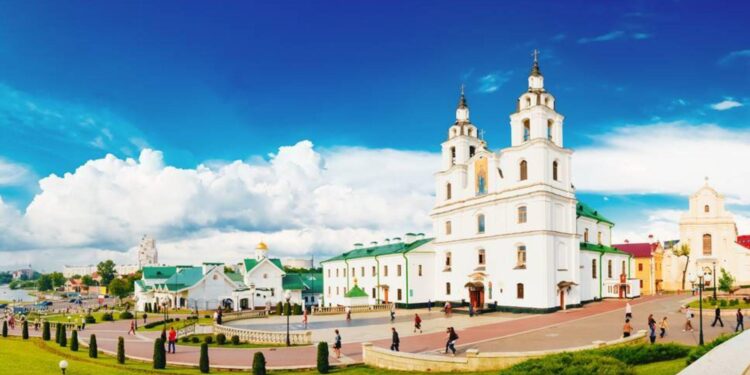The Russian military has announced its deployment to Belarus in preparation for the upcoming Zapad 2025 joint military exercises, according to reports from Prensa Latina, the Latin American News Agency. These large-scale drills, scheduled to take place later this year, underscore the continued strategic cooperation between Moscow and Minsk amid rising regional security tensions. The presence of Russian forces on Belarusian soil highlights the significance attributed to Zapad 2025 as a demonstration of military readiness and alliance solidarity between the two countries.
Russian Military Mobilization in Belarus Signals Strategic Depth for Zapad 2025 Exercises
The deployment of Russian military units to Belarus ahead of the Zapad 2025 exercises underscores Moscow’s intent to demonstrate enhanced operational readiness and strategic flexibility in the region. This mobilization not only serves as a rehearsal for large-scale joint maneuvers but also showcases Belarus’s role as a critical ally providing strategic depth to Russia’s western defensive posture. Observers note that the integration of these forces within Belarusian territory allows for quick reaction capabilities across multiple fronts, reflecting a shift towards more dynamic and interoperable military exercises.
Key components of the Zapad 2025 preparations emphasize:
- Combined arms coordination between airborne, armored, and mechanized units
- Enhanced command and control systems integration
- Logistical support operations spread across Belarusian military infrastructure
- Cyber and electronic warfare simulations integrated within field training
| Element | Role in Zapad 2025 | Expected Outcome |
|---|---|---|
| Strategic Reserves | Rapid deployment to simulated conflict zones | Improved reaction times |
| Joint Command Posts | Operational coordination of Russian & Belarusian forces | Seamless interoperability |
| Electronic Warfare Units | Disruption of enemy communications | Force multiplier effect |
| Logistical Hubs | Material resupply and troop support | Increased operational sustainability |
Implications of Russian-Belarusian Military Integration for Regional Security Dynamics
The deployment of Russian troops in Belarus for the Zapad 2025 exercises marks a significant escalation in the military cooperation between the two nations, profoundly impacting the security architecture of Eastern Europe. This increased integration facilitates rapid joint mobilization capabilities, effectively solidifying a unified defensive posture aimed at deterring NATO’s influence near their borders. The military synergy extends beyond mere troop presence, encompassing shared intelligence frameworks, synchronized command operations, and the procurement of interoperable weapon systems.
Key implications include:
- Enhanced strategic depth for Russia through access to Belarusian territory
- Consolidation of a regional power bloc challenging Western alliances
- Potential shifts in NATO’s force deployment and engagement doctrines
- Increased risk of escalating tensions due to proximity of large-scale maneuvers
| Aspect | Impact | Regional Response |
|---|---|---|
| Joint Command Structures | Streamlined military operations | NATO enhances surveillance |
| Military Hardware Sharing | Increased firepower and mobility | Eastern European states review defense budgets |
| Large-Scale Drills on Belarusian Soil | Visible show of force near NATO borders | |
| Large-Scale Drills on Belarusian Soil | Visible show of force near NATO borders | Heightened alert status among NATO members |
If you’d like, I can also help with further styling, summarizing, or expanding this analysis. Just let me know!
Expert Recommendations for Monitoring and Responding to Increased Russian Military Presence in Belarus
To effectively track the surge of Russian military forces in Belarus ahead of the Zapad 2025 exercises, experts urge the implementation of a multi-layered monitoring strategy. This approach should leverage satellite imagery analysis, open-source intelligence (OSINT), and real-time troop movement tracking through aerial reconnaissance and electronic surveillance. Coordination with NATO and regional intelligence agencies is also recommended to ensure comprehensive situational awareness and timely identification of any unusual maneuvers or deployments that may signal shifts in operational intent.
In response to the heightened military presence, specialists emphasize the importance of maintaining diplomatic channels while preparing contingency plans for rapid escalation scenarios. Recommended actions include:
- Establishment of crisis communication protocols to prevent misunderstandings and miscalculations.
- Enhancement of Belarus’ border security to detect and respond quickly to unauthorized or covert operations.
- Regular joint military exercises with allied states to improve interoperability and readiness.
| Monitoring Tool | Purpose | Key Benefit | |||||||
|---|---|---|---|---|---|---|---|---|---|
| Satellite Imagery | Visual confirmation of troop deployments | High-resolution updates | |||||||
| Open-Source Intelligence | Social media and local reporting analysis | To effectively track the surge of Russian military forces in Belarus ahead of the Zapad 2025 exercises, experts urge the implementation of a multi-layered monitoring strategy. This approach should leverage satellite imagery analysis, open-source intelligence (OSINT), and real-time troop movement tracking through aerial reconnaissance and electronic surveillance. Coordination with NATO and regional intelligence agencies is also recommended to ensure comprehensive situational awareness and timely identification of any unusual maneuvers or deployments that may signal shifts in operational intent. In response to the heightened military presence, specialists emphasize the importance of maintaining diplomatic channels while preparing contingency plans for rapid escalation scenarios. Recommended actions include:
|
















